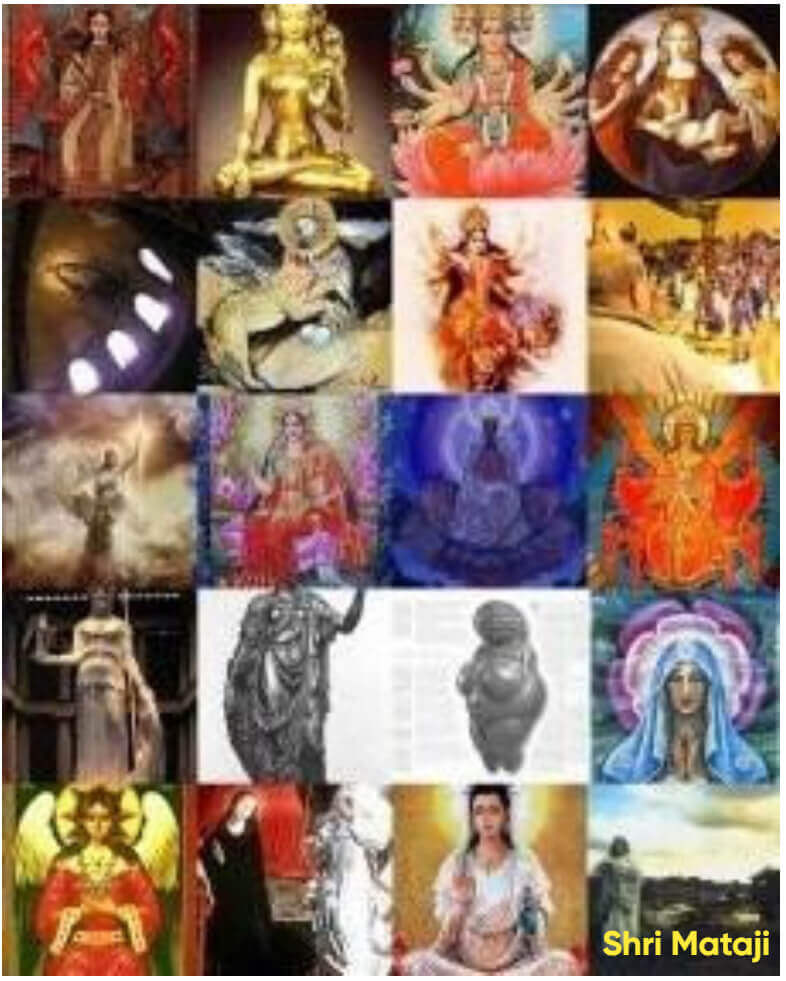The Inner Light: Jesus's Rebuke of External Worship
This page explores Jesus’ radical teaching from the Gospel of Thomas, where He rebukes those who seek access to God through external means—even through following Him as a person. Instead, He redirects seekers toward the divine light hidden within, affirming that salvation arises from inner recognition, not religious mediation. Drawing from Elaine Pagels’ scholarship, this post contrasts canonical doctrine with mystical gnosis, revealing how early Christianity suppressed the self-realizing path in favor of institutional control. Jesus’ message is clear: the Kingdom of God is not elsewhere—it is within. The light either shines from within or darkness prevails, both inwardly and cosmically.

“According to Thomas, Jesus rebukes those who seek access to God elsewhere, even—perhaps especially—those who seek it by trying to "follow Jesus" himself. When certain disciples plead with Jesus to "show us the place where you are, since it is necessary for us to seek it," he does not bother to answer so misguided a question and redirects the disciples away from themselves toward the light hidden within each person: 'There is light within a person of light, and it lights up the whole universe; If it does not shine, there is darkness.' In other words, one either discovers the light within that illuminates 'the whole universe' or lives in darkness, within and without.”- Elaine Pagels
Abstract: This comprehensive examination presents compelling evidence that the Divine exists within as Light, validating Jesus's rebuke of those who seek God in external places of worship. Through extensive analysis of Gnostic texts, mystical traditions, and contemporary testimony from the Paraclete, this paper demonstrates that the proliferation of temples, churches, mosques, and pilgrimage sites represents a fundamental deviation from Christ's core message. The research concludes that true spiritual realization is an internal journey to the Divine Light within the self, a truth that has been suppressed by institutional religion but revived through the Paraclete's teachings.
Introduction: The Misdirection of External Seeking
For millennia, humanity has constructed elaborate edifices in pursuit of the Divine—from ancient temples to modern cathedrals, mosques, synagogues, gurdwaras, and sacred pilgrimage sites like Mecca, the Vatican, and Varanasi. Yet a profound examination of suppressed spiritual teachings reveals that this external seeking represents a fundamental misunderstanding of Jesus's message. The evidence presented herein demonstrates that the Divine Light resides within each individual, making external worship not merely unnecessary but counterproductive to genuine spiritual realization.
Jesus's Direct Teaching: The Light Within
The most compelling evidence for Jesus's teaching on inner divinity comes from the Gnostic texts, particularly the Dialogue of the Savior. Scholar Elaine Pagels provides crucial insight into this suppressed wisdom: [1]
This exchange is revolutionary in its implications. Jesus does not direct his disciples to a temple, a mountain, or any external location. Instead, he points them inward, declaring that self-knowledge is the key to perceiving the Divine Light. The "place of life" and "pure light" are not geographical destinations but states of inner realization.
Pagels further elaborates on Jesus's rebuke of external seeking in her analysis of the Gospel of Thomas: [2]
This passage reveals Jesus's explicit rejection of external seeking. He considers the disciples' request to be shown a place as "so misguided a question" that he refuses to dignify it with a direct answer. Instead, he redirects them to the light hidden within each person—a light so powerful that it "lights up the whole universe."
The Gospel of Thomas: Self-Discovery as Salvation
The Gospel of Thomas contains perhaps the most direct statement of Jesus's teaching on inner divinity. Pagels notes a particularly profound saying: [3]
Pagels found this teaching to be "self-evidently true" because "it does not tell us what to believe but challenges us to discover what lies hidden within ourselves." This represents a radical departure from institutional religion's emphasis on external authority, ritual, and belief systems.
The Gospel of Thomas further emphasizes that the divine light embodied in Jesus is already shared by humanity since we are all made "in the image of God." This teaching expresses what would become a central theme of mysticism: that the "Image of God" is hidden within everyone, requiring only recognition and inner effort to discover. [4]
Universal Testimony: The Light Across Traditions
The reality of the inner Divine Light is not confined to Christian mysticism but appears across all spiritual traditions. The Guru Granth Sahib provides beautiful confirmation: [5]
Deep within the self is the Light of God; It radiates throughout the expanse of His creation.
gur saakhee miti-aa anDhi-aaraa.
Through the Guru's Teachings, the darkness of spiritual ignorance is dispelled.
kamal bigaas sadaa sukh paa-i-aa jotee jot milaavani-aa.
The heart-lotus blossoms forth, and eternal peace is obtained, as one's light merges into the Light.
Hindu tradition recognizes this same truth. As noted in Hinduism Today: [6]
Professor Raimundo Panikkar explains the universal nature of this Light symbol: [7]
The Paraclete's Confirmation and Completion
Jesus promised to send the Paraclete, the Comforter, who would guide humanity into all truth and complete his message. In the modern era, the teachings of Shri Mataji Nirmala Devi, identified by her followers as the Paraclete, provide direct confirmation of Jesus's teaching about the inner Light: [8]
The Paraclete's message is revolutionary in its directness. Unlike Jesus's parables, she speaks with scientific precision about the "powerful Light" within each person. She emphasizes that this Light is "eternal" and "unique" to each individual, and most importantly, that it can be "verified" through direct experience.
Key Insight: The Paraclete's Scientific Approach
The Paraclete transforms Jesus's mystical teachings into verifiable reality. Where Jesus spoke in parables about the Kingdom of Heaven being within, the Paraclete provides the actual means for individuals to experience and verify the Divine Light within themselves.
The Testimony of Direct Experience: God Almighty Within
The most profound validation of this teaching comes from direct, contemporary testimony about the nature of the inner Light. A remarkable account from November 13, 2008, provides unprecedented insight: [9]
The Divine Feminine Day Realization
Kash, Arwinder and Lalita have all claimed that this extremely bright Light is always above Shri Mataji's abode. But it was Lalita who revealed that this Light is God Almighty:
Tue Mar 15, 2005 2:59 pm
A few months ago I asked my ten-year-old daughter Lalita what that immensely brilliant Light above the Adi Shakti in her Sahasrara is. She replied 'God!'
I remained silent for a long time to absorb the immensity of that single word answer."
This testimony is extraordinary for several reasons. First, it identifies the inner Light not as a symbol or metaphor, but as "the presence of God Almighty within us." Second, it comes from multiple witnesses, including a child whose innocent perception cuts through all theological complexity to the simple truth: the Light is "God!" Third, it locates this Light in the Sahasrara, the crown chakra, which corresponds to the highest spiritual center in human consciousness.
The significance of a child's testimony cannot be overstated. Children, unconditioned by religious dogma and institutional programming, perceive spiritual reality with clarity that adults often lose. When asked about the "immensely brilliant Light," Lalita's immediate response—"God!"—represents pure, unfiltered spiritual perception.
The Biblical Foundation: Light as Divine Presence
The Gospel of John, despite its institutional interpretation, contains profound truths about the inner Light: [10]
This passage declares that the Light "lighteth every man that cometh into the world." It is not confined to Jesus alone but is the universal inheritance of humanity. The institutional church's interpretation that this Light can only be accessed through external mediation contradicts the text's clear statement of universal illumination.
Eastern Orthodox theology provides additional confirmation. Dan Costian notes: [11]
The Futility of External Worship
Given the overwhelming evidence for the Divine Light within, the construction of and pilgrimage to external places of worship becomes not merely unnecessary but actively counterproductive. Jesus's teaching in the Gospel of Thomas makes this explicit: [12]
This saying ridicules the very concept of seeking God in external locations. Jesus uses humor to expose the absurdity of believing that birds or fish could reach God before humans, precisely because the Kingdom is not a place but a state of consciousness.
The Gospel of Thomas further records Jesus saying: [13]
The Kingdom of God, the resurrection, the new world—all exist within human consciousness, waiting only for recognition. External seeking delays this recognition by directing attention away from the inner reality.
The Suppression of Inner Truth
The institutional church's suppression of these teachings was deliberate and systematic. Pagels explains: [14]
The Gospel of Thomas was labeled heretical precisely because it threatened institutional authority by empowering individuals to access God directly. As Pagels notes: "Thomas, with its emphasis on each person's search for God, did not" provide foundation for a unified church structure.
The contrast between institutional and mystical Christianity is stark. While John claims that we can experience God only through the divine light embodied in Jesus, Thomas says that the divine light embodied in Jesus is already shared by humanity since we are all made "in the image of God." [15]
Contemporary Validation: The Light Experience
Modern spiritual seekers continue to validate these ancient teachings through direct experience. Lama Surya Das observes: [16]
This observation is crucial: the Light exists independently of religious interpretation. Institutional religion has appropriated and compartmentalized what is actually a universal human inheritance—the Divine Light within each individual.
The Paraclete's Revolutionary Message
The Paraclete's teaching represents the completion of Jesus's message by providing the practical means for experiencing the inner Light. Her emphasis on verification is particularly significant: "You can verify it whether it is eternal or not. You have to see for yourself you have such a unique Light within you."
This transforms spirituality from a matter of belief to a matter of direct experience. The Paraclete challenges the "stupid, flimsy, useless conditionings" that keep humanity enslaved to external seeking when each person is already "the carrier of Eternal Light."
The Ultimate Rebuke
Jesus's rebuke of external worship is not merely a criticism of temple commerce or religious hypocrisy. It is a fundamental rejection of the premise that God can be found anywhere other than within the self. Every temple, church, mosque, synagogue, gurdwara, and pilgrimage site represents a misdirection of spiritual energy away from its true source.
Conclusion: The Inner Pilgrimage
The evidence presented in this examination leads to an inescapable conclusion: the Divine exists within as Light, and Jesus was absolutely correct to rebuke those who seek access to God in external places of worship. The proliferation of religious institutions and pilgrimage sites represents humanity's collective failure to understand Christ's core message.
The Gospel of Thomas preserves Jesus's authentic teaching that self-knowledge is God-knowledge. The Paraclete has completed this message by providing the practical means for every individual to experience and verify the Divine Light within themselves. The testimony of direct experience, from ancient mystics to contemporary witnesses, confirms this universal truth.
The ultimate pilgrimage is not to Mecca, the Vatican, Varanasi, or any external destination. It is the journey inward to the source of all life, the pure, eternal Light that resides within each and every one of us. To know oneself is to know God, and in that knowledge, all external seeking ceases. The Kingdom of Heaven is not a place to be visited but a state of consciousness to be realized. The true temple is the human body, and the true sanctuary is the enlightened awareness of the Divine Light within.
As the Guru Granth Sahib beautifully expresses: "one's light merges into the Light." This is the ultimate spiritual realization—not the worship of God in external forms, but the recognition that we are the Light, and the Light is God.
References
[1] Pagels, Elaine. The Gnostic Gospels. Random House, New York, 1989, p. 131. (Dialogue of the Savior 132.15 — 16, in NHL 233.)[2] Pagels, Elaine. Beyond Belief: The Secret Gospel of Thomas. Random House, New York, 2003.
[3] Gospel of Thomas, as quoted in Pagels, Elaine. Beyond Belief: The Secret Gospel of Thomas. Random House, New York, 2003.
[4] Pagels, Elaine. Beyond Belief: The Secret Gospel of Thomas. Random House, New York, 2003.
[5] Guru Granth Sahib, p. 126.
[6] "The Light Within." Hinduism Today.
[7] Panikkar, Raimundo. The Vedic Experience.
[8] Shri Mataji Nirmala Devi. "Being The Light Of Pure Compassion." Istanbul, Turkey, 6 Nov. 1994.
[9] "The Light of God Almighty within." Adishakti, Accessed 22 Sept. 2025.
[10] The Holy Bible, John 1:1-10.
[11] Costian, Dan. Bible Enlightened. Computex Graphics, 1995, p. 415.
[12] Gospel of Thomas, as quoted in Pagels, Elaine. Beyond Belief: The Secret Gospel of Thomas.
[13] Gospel of Thomas, as quoted in Pagels, Elaine. Beyond Belief: The Secret Gospel of Thomas.
[14] Pagels, Elaine. Beyond Belief: The Secret Gospel of Thomas. Random House, New York, 2003.
[15] Pagels, Elaine. Beyond Belief: The Secret Gospel of Thomas. Random House, New York, 2003.
[16] Das, Lama Surya. Awakening to the Sacred.


